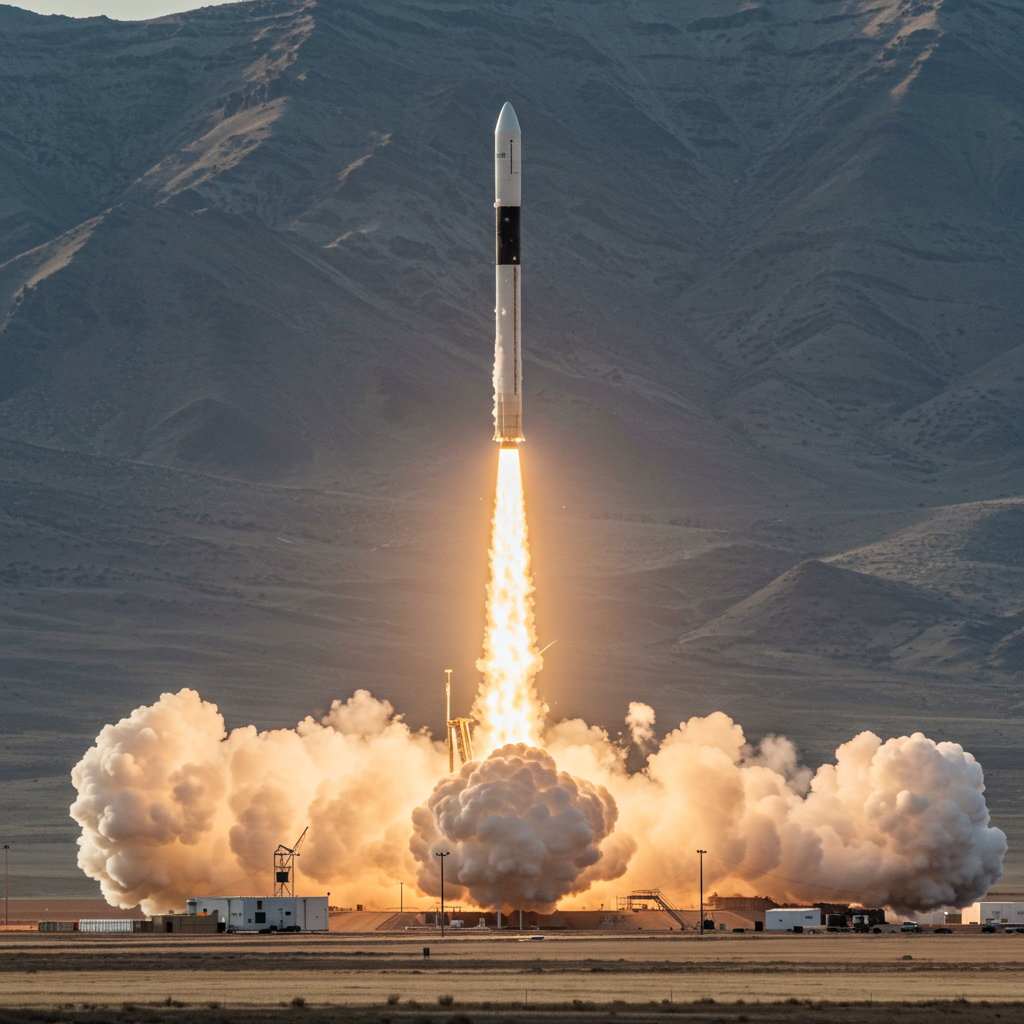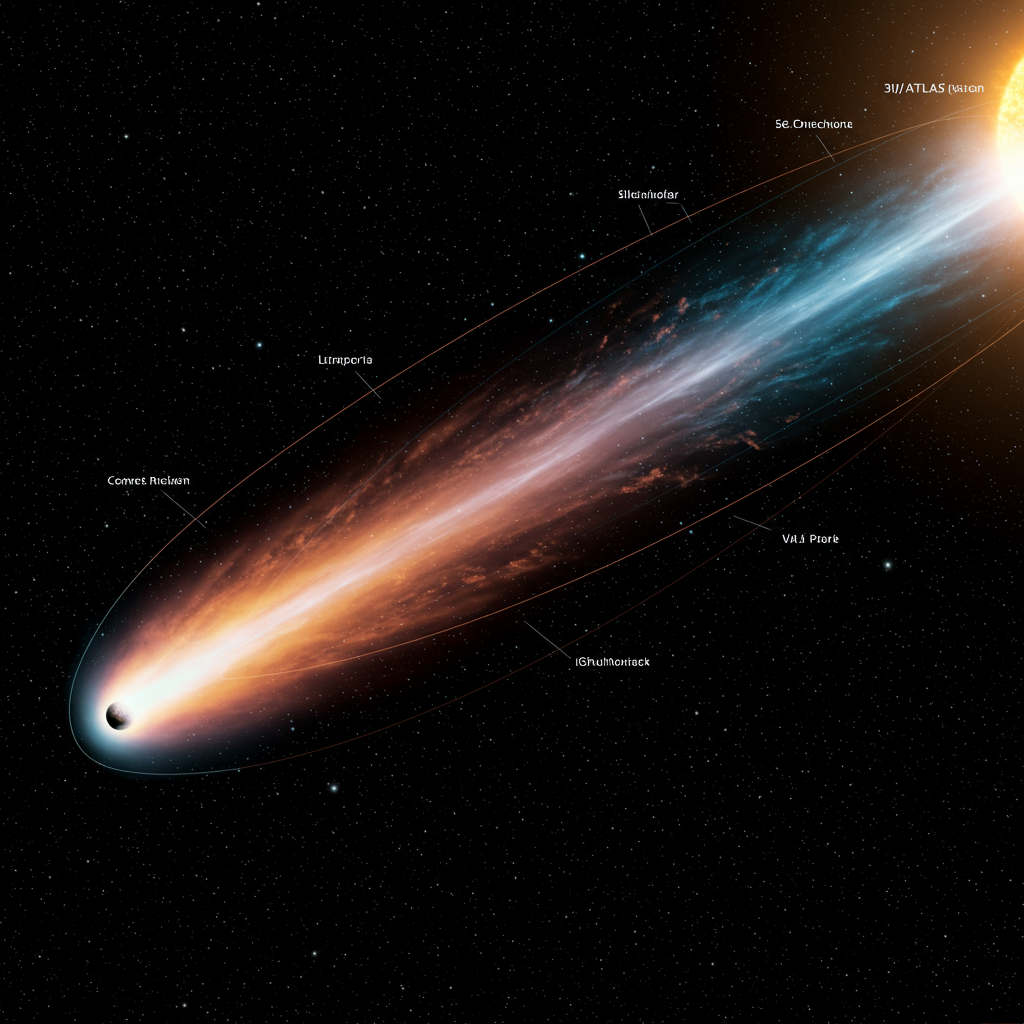Utah played a pivotal role in advancing America’s deep space exploration goals with a critical test of a powerful new solid rocket motor. Conducted by NASA and Northrop Grumman at their Promontory, Utah facility in Box Elder County, this test fired the Booster Obsolescence and Life Extension (BOLE) motor. Designed to power the Space Launch System (SLS) rocket, the BOLE booster is a crucial upgrade for future Artemis missions aimed at returning humans to the Moon and eventually exploring Mars. This successful test represents a significant step forward, validating years of development and demonstrating the innovative engineering happening right here in Utah.
Utah’s Role in Powering NASA’s Future
On June 26, 2025, hundreds gathered in Promontory to witness the static fire test of the BOLE Development Motor 1 (DM-1). This event was more than just a demonstration of raw power; it marked the first “tip to tail new booster” tested by NASA since around 1975. The sheer force generated by the motor was incredible, producing a spectacular light show and ground-shaking power felt for miles around.
The BOLE motor is essential for NASA’s Artemis program. The current SLS rocket uses modified boosters originally designed for the Space Shuttle era. These boosters are expected to support missions only through Artemis 8. For subsequent, more ambitious missions – including those with trajectories enabling Mars exploration – a more advanced and powerful motor is required. The BOLE booster is specifically designed to meet this demand.
Testing the Mighty BOLE Booster
The DM-1 test provided engineers with vital data on the new motor’s performance. It successfully fired for approximately two minutes and 20 seconds, consuming over 1.4 million pounds of propellant and generating over 4 million pounds of thrust upon ignition. This is significantly more thrust than the previous generation of SLS boosters, which produced around 3.6 million pounds.
While the test was largely considered a success, an anomaly occurred near the end of the burn. Roughly 10 seconds before the motor finished firing, observers noted a brightening of the plume, followed by debris and the energetic liberation or disintegration of the nozzle. Despite this issue, NASA and Northrop Grumman officials highlighted the vast amount of valuable data collected throughout the burn. As Dave Reynolds, SLS Booster Program Manager at NASA Marshall Space Flight Center, put it, “Generally speaking, it was a very successful test… It’s better to be on the ground wishing you were in space than in space wishing you were on the ground.” Testing on the ground allows engineers to learn and refine designs safely. They went into this test expecting to push materials to their limits.
This booster’s enhanced capabilities stem from several technical advancements:
Composite Casings: Instead of heavier steel, BOLE utilizes carbon-fiber composite casings. This reduces weight while improving performance.
Increased Size: The BOLE motor is slightly taller (47.5 meters vs. 46.9 meters) and wider (3.8 meters vs. 3.7 meters) than the current boosters.
Redesigned Nozzle: Features a larger diameter composite nozzle (4.4 meters vs. 3.9 meters) designed for greater efficiency.
Improved Propellant: Uses an upgraded hydroxyl-terminated polybutadiene (HTPB) propellant.
Higher Pressure & Thrust: Operates at a higher maximum pressure (1330 psia vs. 1016 psia), contributing to its increased thrust.
Payload Capacity: These improvements are projected to add five metric tons of payload capacity to lunar orbit for the SLS Block 2 configuration.
- Electronic TVC: Future BOLE motors will employ electronic thrust vector control, a more streamlined system than the current hydraulic one.
- www.fox13now.com
- opentools.ai
- www.nasaspaceflight.com
- www.airandspaceforces.com
- www.space.com
Many of these advancements leverage technology developed during Northrop Grumman’s canceled OmegA rocket program, which was also tested at the Promontory facility. DM-1 is considered the second most powerful solid rocket motor ever tested globally, following only a massive 260-inch booster tested in the 1960s.
A Local Connection to Space Exploration
The project has a strong connection to Utah. Dave Reynolds, the NASA program manager, is a native of Roy, Utah. He shared how watching the Space Shuttle Challenger disaster in second grade, despite its tragedy, ignited his lifelong passion for space exploration, inspired by the astronauts’ bravery. For him, this project represents the culmination of that early inspiration. “Little me would just be jumping for joy,” Reynolds remarked when asked what his childhood self would think of his current role. Northrop Grumman’s Mark Pond also highlighted the design’s capability, stating the “thrust trace grain design enables a Mars trajectory.”
The BOLE test is more than just a technical milestone; it’s fundamental to the Artemis program’s existence and its ambitious goals. It enables larger payloads and supports the complex logistics required for extended deep space missions.
Addressing Challenges and Looking Ahead
The nozzle anomaly observed during the DM-1 test will be thoroughly analyzed. NASA and Northrop Grumman plan four additional tests to further refine the BOLE design based on data collected. Learning from tests on the ground is a critical part of ensuring safety and reliability for future missions.
It’s important to note a separate incident that occurred at the Promontory facility earlier. On April 16, 2025, an explosion destroyed a building within the extensive complex. While initial reports confirmed no injuries and an investigation is underway, company officials clarified that the destroyed building was not directly involved in the critical Sentinel ICBM program or testing on the scale of the SLS boosters. Boosters for Artemis 2 are already at Kennedy Space Center, and Artemis 3 boosters, completed in 2022, are stored in Utah. The April incident does not currently affect the timelines for Artemis 2 or 3 but highlights the scale and complexity of the Promontory site, which accounts for nearly 90 percent of U.S. solid rocket motor manufacturing capacity.
The future of the BOLE program is also tied to the broader political and budgetary landscape surrounding the SLS program. While Congress has shown support, potential budget shifts could impact the full planned manifest of Artemis missions, particularly those utilizing the Block 2 configuration where BOLE boosters are slated to begin service (currently projected for Artemis IX and beyond, potentially into the 2030s). Successes like the DM-1 test are vital for demonstrating the program’s value and securing sustained investment.
The development of BOLE also has wider implications, supporting job creation in the aerospace sector, inspiring future generations in STEM fields, and contributing data that could inform solutions for terrestrial challenges. It underscores the importance of strategic partnerships between government agencies like NASA and industry leaders like Northrop Grumman.
The path forward involves meticulous data analysis, design refinement through further testing, and navigating the complex funding environment. The successful DM-1 test is a significant achievement, keeping the option open for more powerful SLS configurations and enabling humanity’s next giant leaps to the Moon and Mars.
Frequently Asked Questions
What is the BOLE booster and why was its test in Utah important for NASA?
The Booster Obsolescence and Life Extension (BOLE) is a new, powerful solid rocket motor being developed by Northrop Grumman for NASA’s Space Launch System (SLS) rocket. The successful test at Promontory, Utah, on June 26, 2025, was crucial because BOLE is intended to replace the older, shuttle-era boosters currently used by SLS. This new motor is designed for enhanced performance necessary for future Artemis missions to the Moon and potential human voyages to Mars, marking the first major solid rocket motor design tested by NASA since the 1970s.
What happened during the BOLE rocket motor test, including the nozzle anomaly?
During the DM-1 test in Utah, the BOLE motor fired as planned for about two minutes and 20 seconds, generating over 4 million pounds of thrust. It was largely successful in demonstrating its performance capabilities. However, approximately 10 seconds before the burn finished, there was a nozzle anomaly involving debris and the disintegration of the nozzle. Despite this issue, engineers collected extensive data, and officials considered the test successful overall, noting that such issues during ground testing provide critical information for design refinement.
How does the BOLE motor enhance NASA’s SLS and what are the future plans?
The BOLE motor significantly enhances the SLS by using lighter composite casings, operating at higher pressures, and providing increased thrust and specific impulse compared to current boosters. This results in an estimated five metric tons of additional payload capacity for the SLS Block 2 configuration. While this first test encountered an anomaly, four more tests are planned to refine the design. The successful development of BOLE is essential for enabling more ambitious deep space missions beyond the capabilities of the current SLS boosters.
Word Count Check: 1163 words




